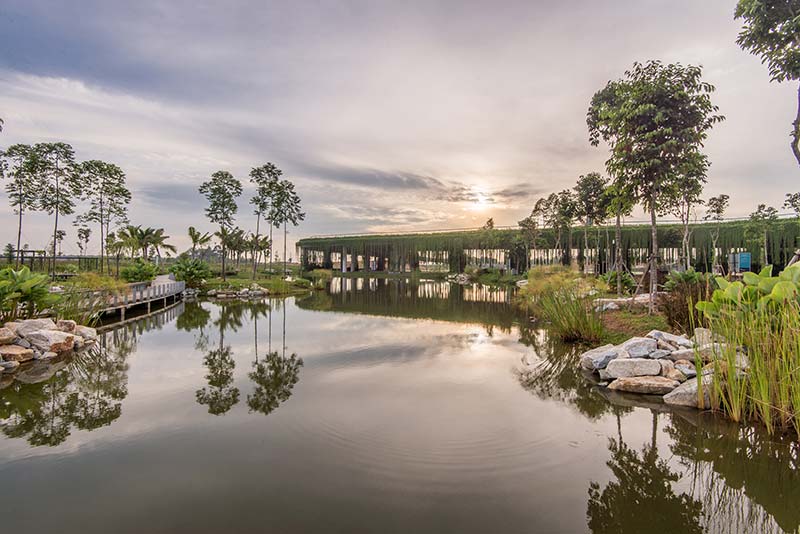
The intrinsic human act of place-making is the basic principle driving the design conceptualization. Humankind’s desire to mark their presence on the landscape is the fundamental driving force – to make a place identifiable to their kind or collective group belongs to them. The collective social activities are centered around a public space associated with the community. Traditionally, this appeared in the simplest forms as: street, junction, yard; and in more elaborate urban forms as: city square, park, hall, stadium.
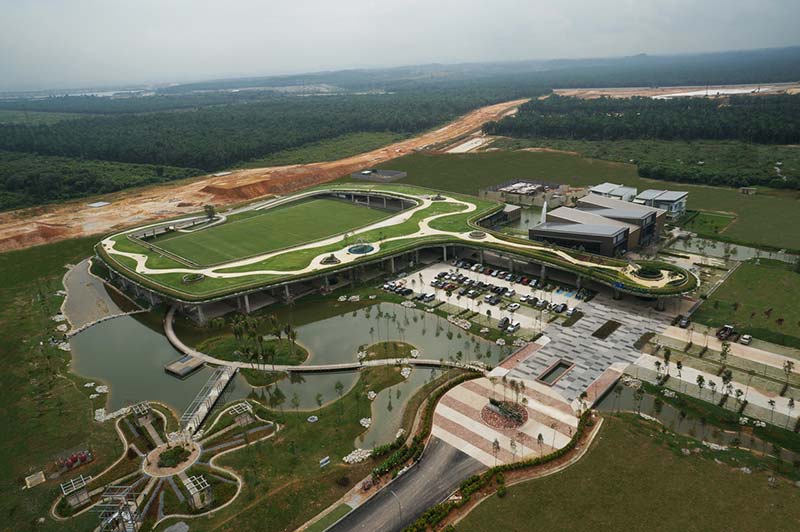
The Arc is conceived from this fundamental intent. At the most fundamental level, it provides shelter for community activities – the place for regular living amenity, social and recreational activities, communal and sports events.

Simultaneously, it needs to respond to the environment, particularly in addressing the sunlight, heat, humidity and rain of the tropical climate. Correspondingly, it takes the form of a tall and wide covered walkway to shelter the intended community activities. The roof solution responds to the desire to keep itself and the space below cool by sustainable means: insulating with soil and greenery. In doing so it effectively ‘replaces’ the original greenery at ground plane with an new eco-system on elevated deck that not only provides open space for recreation but also offers higher vantage points to enjoy views across a fairly flat township and the activities below. The slowly rising roof structure and green roof-deck is regarded as an expression of humankind’s primal nature of working from and modifying the landscape in response to place-making for a community – by putting their mark on the land – effectively conducting the act of making a landmark in the most basic form. The landmark does not need to be a symbolic object to be looked at, but should fundamentally serve the basic communal functions and as a place for human experience and encounter. This is the basic principle adopted in the design conceptualization.
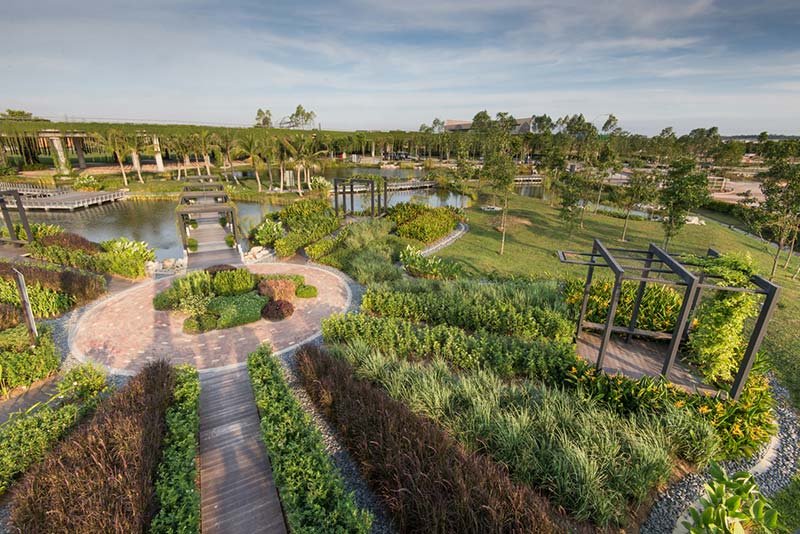
Its name, The Arc, is derived from the underlying plan shape of an arc embracing the communal green open space. At the opened side, each end is lowered to provide pedestrian access by ramping up towards the green roof deck that serves an upper level pedestrian network of garden paths connecting the whole collection of buildings at two separate levels.
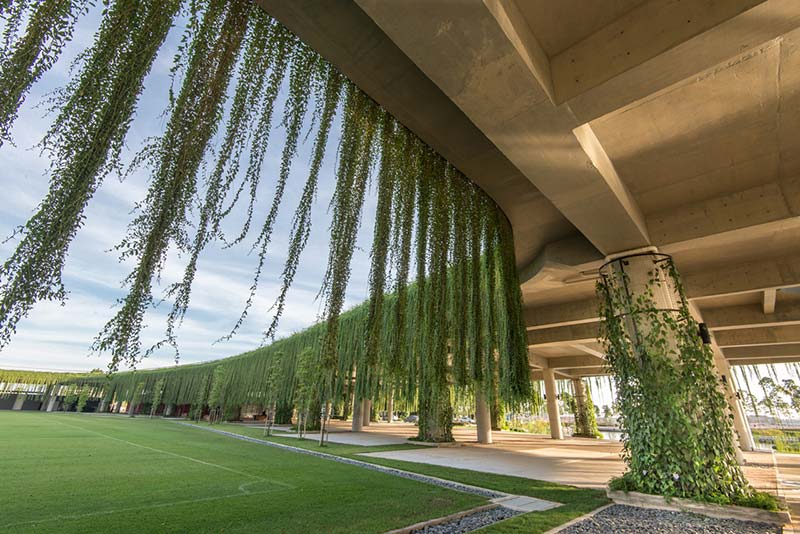
Symbolically, The Arc is a manmade intervention – a demarcation in the act of place-making by establishing an identity for the community and township – whereas functionally, it provides shelter and the collective public domain for various community amenities, and these are:
• canal parkland surrounds, pocket green terraces between buildings and roof-deck gardens for a wide range of activities from small to large, public to semi-private
• covered green canopy walkway with green roof-deck as the connecting pedestrian street linking the complex of buildings at grade and via elevated parkway above
• community shop lots, surau and toilets
• multi-sport field and multiple playgrounds designed for a wide age groups from toddlers to teenagers
• community spaces and multipurpose hall
• future residents’ clubhouse complex providing food and beverage, sports and recreation activities
• landscaped parking forecourt
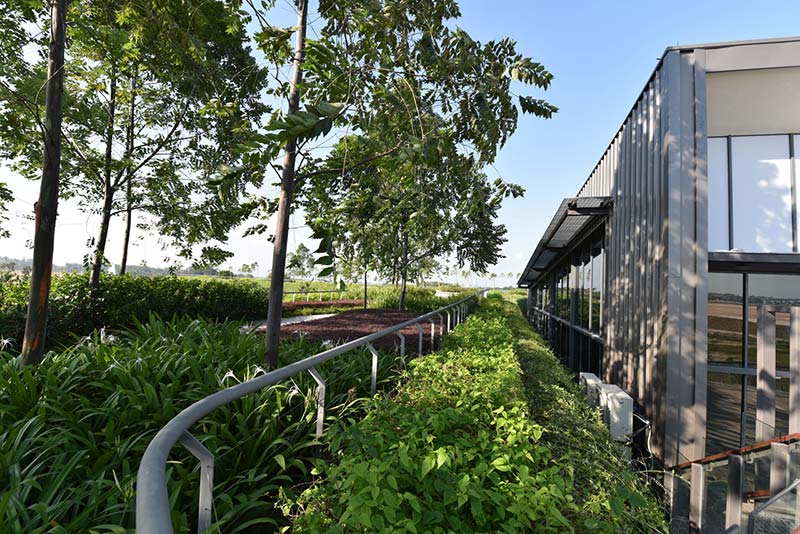
The most significant achievement is perhaps in managing to convince the client, a mass market developer and infrastructure builder, to accept the project intent and solution that do not represent traditional expectations of a landmark architecture – instead evolving from community and sustainable approach to place-making for the people in general. The success and acceptance can be seen in the way the marketing of the township is centered on The Arc as a symbolic identity or icon for marketing collaterals and billboards. In being able to identify with an icon (as opposed to the intent of being an iconic building), the philosophies of the township development are succinctly summed up in an image, thus putting this man-made intervention on the land in an act of place-making for the community.
Others being: innovative and integrated solutions in passive sustainable design; response to climate, multiple functions, and adaptability; engaging the community with social events and public amenities; and engaging the young with educational showcases.
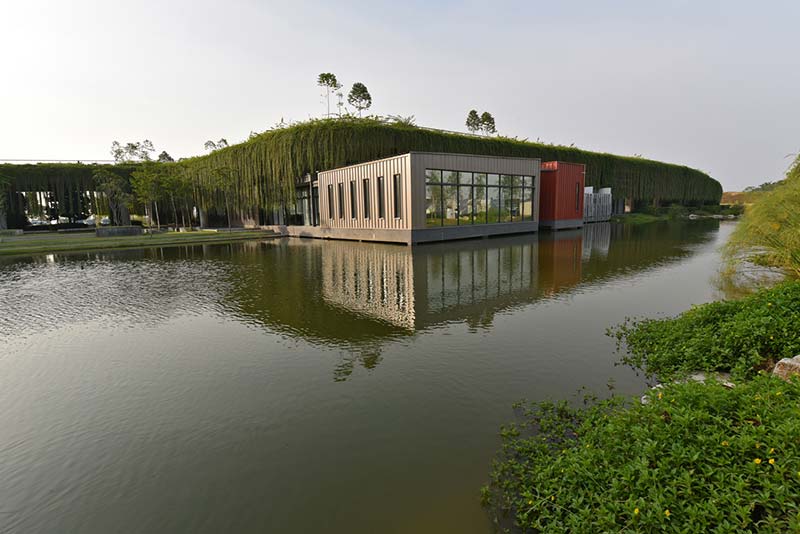
Sustainability
The approach to sustainability is taken holistically. Beyond building sustainably (Green Building Index design principles), it is equally important to start from the long term perspective – in building community awareness in sustainability through initiatives programs, community projects and education – to achieve a way of life, culture and attitude of sustainability amongst the people of community from young to old. In fact, the software (the practice) is more important, timeless and hence, more sustainable than the hardware (the building). The Arc is designed to be a living and evolving education showcase of sustainable approach.
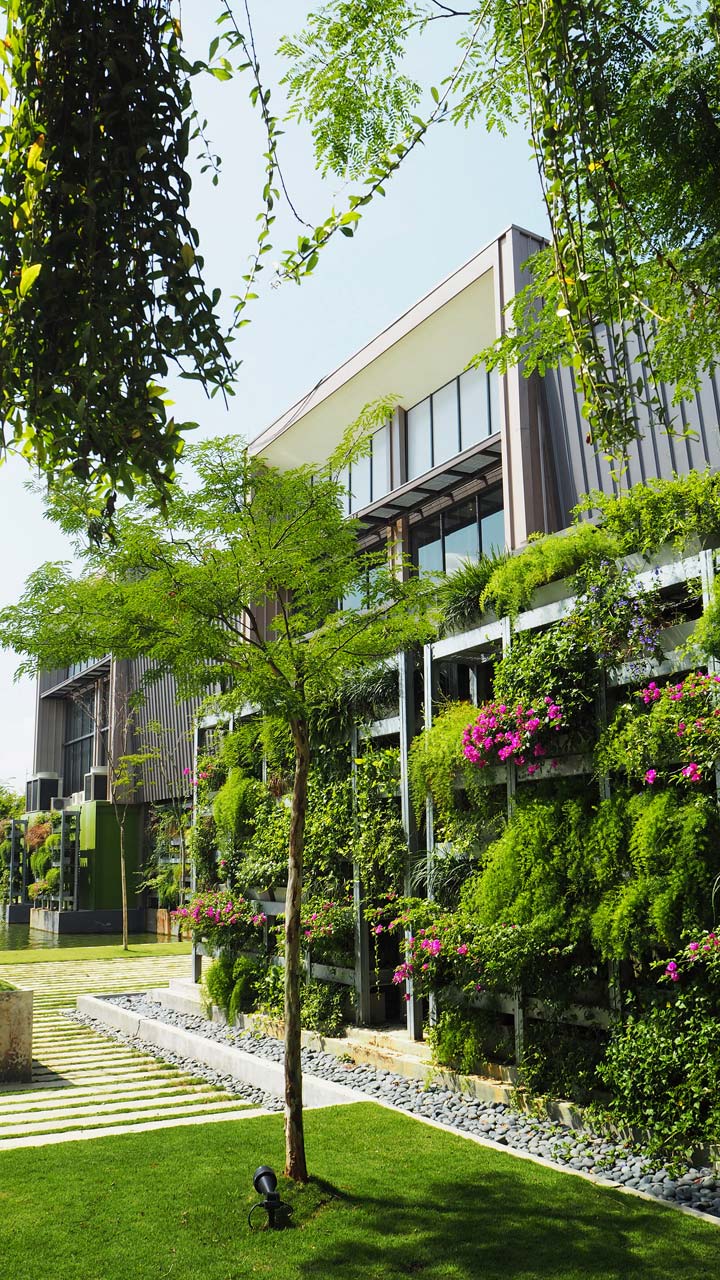
Each sustainable solution is intended to be a means rather than the end itself. Therefore each of green solution has a corresponding purpose, as such:
• Green roof deck – insulates and filters collected rainwater before discharging to the canal waterways. The water is channel through drips at each column grown with climbing plants, thereby promoting evaporative cooling as breeze passes through. This emulates the process of nature and thus intending to provide a lesson in how the natural environment works.
• The recreational canal is simultaneously a rainwater collection vessel, the contents of which can be reused for irrigation of plants.
• Adaptive use/re-use capability of the canopy walkway allows the space below to function as a pedestrian street whereby additional shop-lots and amenities can be introduced as the demand requires. Design solutions include removable floor covering over services strips for future installation.
• Community vegetable gardens – promote integration among the residents and education on the values being self-reliant, fostering cooperation and the principles of growing and harvesting agricultural produce. In connection with this program, recycling centre and organic composting sites are also envisioned.
• Promotion of active and healthy lifestyle through design that encourages walking and cycling, community interaction, sports and recreation in daily activities through integrated usage and a common centre.
Project Details:
Location: Bandar Rimbayu, Selangor, Malaysia
Type: Public
Client: Bandar Rimbayu Sdb Bhd, Ijm Land Berhad
Architects: Garis Architects Sdn Bhd
Design Team: Ar Tang Hsiao Seak, Ar Steven Ngu Ngie Woon
Photographs: Steven Ngu, Andy Lim


